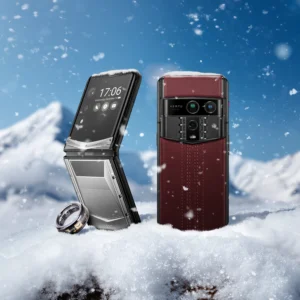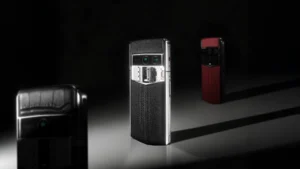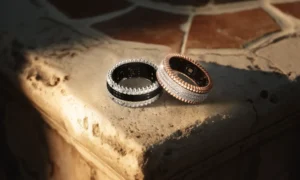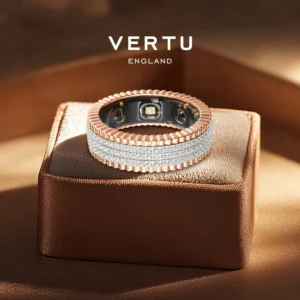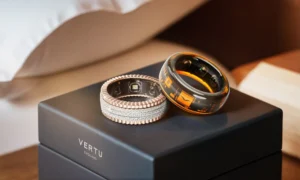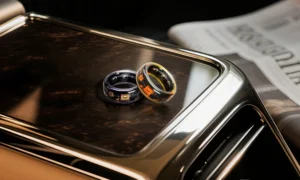Have you ever wondered why Apple, a leader in wearable tech, hasn’t launched a smart ring yet? With the rising demand for compact wearables, it seems like a natural step. Smart rings are gaining traction for their usefulness in health tracking, notifications, and even payments. Their sleek design appeals to those who prefer subtle accessories. Yet, an Apple ring remains absent. Could it be that Apple sees challenges in balancing innovation with practicality? Or maybe the market doesn’t align with Apple’s vision. Let’s explore what might be holding them back.
Key Takeaways
-
Apple might skip making smart rings to keep Watch sales strong. A new ring could compete with their popular wearable device.
-
The company works on big ideas that match its goals. Smart rings might not fit Apple's plan to improve current products.
-
The smart ring market doesn’t make enough money for Apple. Its growth is small compared to the billions from top products.
-
Making a ring with advanced features is very hard. Problems like short battery life and tricky use could upset users.
-
Apple wants all its devices to work well together. A smart ring should add to current devices, not copy what they do.
Strategic Considerations for Apple's Smart Ring Project
Avoiding Cannibalization of Apple Watch Sales
You might wonder why Apple hasn’t jumped into the smart ring market yet. One big reason could be the risk of cannibalizing its own products, especially the Apple Watch. Apple has faced similar situations before. For example:
-
The iPhone took over the iPod’s market.
-
The iPad reduced Mac sales.
-
The iPad mini impacted the sales of larger iPads.
Apple’s leadership, however, doesn’t shy away from this challenge. As Tim Cook once said:
“I see cannibalization as a huge opportunity for us. One, our base philosophy is to never fear cannibalization. If we do, somebody else will just cannibalize it, and so we never fear it.”
Still, the Apple Watch is a cornerstone of Apple’s wearable lineup. It’s packed with health and fitness features, and its success might make the development of a smart ring less appealing. Why risk creating an apple-branded smart ring that could eat into the Watch’s dominance?
Maintaining Focus on Core Innovations
Apple’s strategy has always been about focusing on what it does best—creating products that are innovative, user-friendly, and beautifully designed. The company prioritizes technologies that improve lives and align with its vision. Tim Cook once said:
“We’re a group of people trying to change the world for the better… We develop products in such a way that we infuse humanity into them.”
This philosophy explains why Apple invests heavily in areas like augmented reality, artificial intelligence, and health tech. The development of a smart ring might not fit into these core innovation areas. Instead, Apple seems more focused on enhancing its existing products, like the Apple Watch, to deliver even better user experiences.
Limited Revenue Potential in the Apple Ring Market
The global smart ring market is growing, but its revenue potential might not be enough to attract Apple. According to estimates:
|
Year |
Estimated Revenue (USD) |
CAGR (%) |
|---|---|---|
|
2025 |
N/A |
|
|
2030 |
1,101.60 million |
21.1 |
While these numbers show growth, they pale in comparison to the billions Apple earns from its flagship products. For a company of Apple’s scale, the smart ring market might seem too niche to justify the investment. You can see why Apple might hesitate to divert resources from its more lucrative ventures.
Technical and Design Challenges of an Apple Ring
Small Form Factor Limitations
Designing a smart ring is no small feat. Its compact size creates a host of challenges that even a tech giant like Apple would need to overcome. Think about it—how do you fit advanced features like health monitoring, NFC payments, and gesture controls into something so tiny? Miniaturizing components is essential, but it often comes at a cost. Smaller batteries mean shorter battery life, which could leave you charging your ring more often than you'd like. Power management becomes a balancing act, especially when users expect at least a week of use on a single charge.
Material choices also play a big role. Apple would need to ensure the ring is durable, waterproof, and comfortable for all-day wear. And let’s not forget about sizing. Fingers come in all shapes and sizes, so creating a one-size-fits-all solution isn’t realistic. Apple would need to offer multiple sizes, adding complexity to manufacturing and distribution.
Usability and User Experience Constraints
When it comes to usability, smart rings face unique hurdles. They’re smaller than other wearables, which limits their functionality. You might find that a ring can’t do everything your Apple Watch or iPhone can. For example, the small size could make it harder to include a display or advanced sensors.
Battery life is another sticking point. Frequent charging can frustrate users, especially if they’re used to the longer battery life of other Apple devices. Integration with existing ecosystems can also be tricky. If a smart ring doesn’t work seamlessly with your iPhone or Apple Watch, it could feel more like a gimmick than a useful tool.
|
Usability Issue |
Description |
|---|---|
|
Smart rings may lack capabilities compared to larger devices, affecting user adoption. |
|
|
Battery Life and Charging Challenges |
Small size may lead to short battery life and frequent charging, impacting user satisfaction. |
|
Interoperability and Ecosystem Compatibility |
Issues with integrating smart rings into existing technology ecosystems can hinder user experience. |
Integration with Apple's Ecosystem
Apple excels at creating products that work together seamlessly, and a smart ring would be no exception. Imagine a ring that syncs effortlessly with your iPhone and Apple Watch, giving you personalized health insights across devices. It could even offer gesture controls, letting you interact with your Apple devices hands-free.
However, achieving this level of integration isn’t easy. Apple would need to ensure the ring enhances, rather than duplicates, the functionality of its existing products. For example, it could provide additional health metrics or act as a lightweight alternative for fitness tracking. But if the ring overlaps too much with the Apple Watch, it might struggle to find its place in Apple’s ecosystem.
Market and Consumer Insights on Smart Rings
Niche Appeal of Smart Rings
Smart rings cater to a specific group of users who value subtle, compact wearables. Unlike larger devices, these rings offer a discreet way to track health and fitness metrics. They appeal to people who prefer minimalist designs or want an alternative to traditional wearables like watches.
The demographic profile of smart ring users highlights their niche appeal. Most users fall between the ages of 25 and 44, with men making up a slightly larger share than women. Here's a breakdown:
|
Age Group |
Percentage of Users |
|---|---|
|
25 to 34 years |
|
|
35 to 44 years |
19.19% |
|
45 to 54 years |
17.38% |
|
55 to 64 years |
12.54% |
|
18 to 24 years |
8.42% |
|
65 years and above |
8.2% |
|
Male |
56.2% |
|
Female |
43.8% |
If you’re in this age range or enjoy sleek, functional accessories, a smart ring might be the perfect fit for you.
Overlap with Apple Watch Features
Smart rings and the Apple Watch share several overlapping features, especially in health and fitness tracking. Both devices monitor heart rate, blood oxygen levels, and calories burned. They also integrate with iOS, making them convenient for Apple users.
|
Feature |
Smart Rings |
Apple Watch |
|---|---|---|
|
Health Tracking |
Monitors heart rate, blood oxygen |
Monitors heart rate, blood oxygen |
|
|
saturation, calories burned, steps |
saturation, calories burned, steps |
|
Integration with iOS |
Potential seamless integration |
Seamless integration with iOS |
However, smart rings could offer enhanced health metrics with additional sensors. They might also serve as lightweight alternatives for fitness tracking, complementing the Apple Watch rather than replacing it.
Competition from Established Players
The smart ring market already has strong competitors. Companies like Bellabeat, Boat, McLear Ltd., Motiv, and Noise dominate the space. Boat, for instance, generated $500 million in revenue in 2023, while Noise earned $243 million. These brands have established themselves with innovative products and competitive pricing.
If Apple were to enter this market, it would face stiff competition. You’d likely see Apple leveraging its ecosystem to stand out, but the challenge of competing with these established players might still deter the company.
Sustainability and Production Challenges for an Apple Ring
Environmental and Material Concerns
When you think about wearables like a smart ring, you might not immediately consider their environmental impact. But these devices, just like other electronics, contribute to growing e-waste. Many smart rings are designed for quick replacement rather than repair, which adds to the problem. Producing them also consumes a lot of energy and releases carbon emissions. This is especially true because the tech industry often pushes for fast product cycles.
To reduce these impacts, manufacturers need to adopt sustainable practices. Using eco-friendly materials and modular designs can make a big difference. For example, a modular design allows you to replace parts instead of discarding the entire ring. These steps are essential if companies want to balance innovation with environmental responsibility.
Complexity of Sizing and Manufacturing
Creating a smart ring isn’t as simple as making a one-size-fits-all product. Your fingers are unique, and that means manufacturers have to produce rings in multiple sizes. In fact, they often need to offer up to ten different sizes, sometimes even more when you include half sizes. This adds a layer of complexity to the manufacturing process.
Imagine the costs involved. Companies have to invest heavily in producing and storing inventory for all these sizes. This ties up a lot of capital and makes the process less efficient. For a company like Apple, which values streamlined production, this could be a significant hurdle. The challenge of balancing variety with cost-effectiveness might make the smart ring market less appealing.
Apple's Long-Term Innovation Priorities
Apple has always focused on creating products that seamlessly integrate hardware, software, and services. This approach enhances your experience as a user and builds strong brand loyalty. When you use an Apple product, you’re likely to appreciate how well it works with other devices in the ecosystem. This interconnectedness encourages you to invest in multiple Apple products, adding value to your overall experience.
Apple’s long-term priorities also include patience and perfection. As Tim Cook once said:
“We don’t believe in using our customers as a laboratory. What we have that I think is unique is patience. We have the patience to wait until something is great before we ship it.”
This philosophy explains why Apple might hesitate to enter the smart ring market. The company would rather wait and ensure the product aligns with its high standards and ecosystem than rush into a niche market.
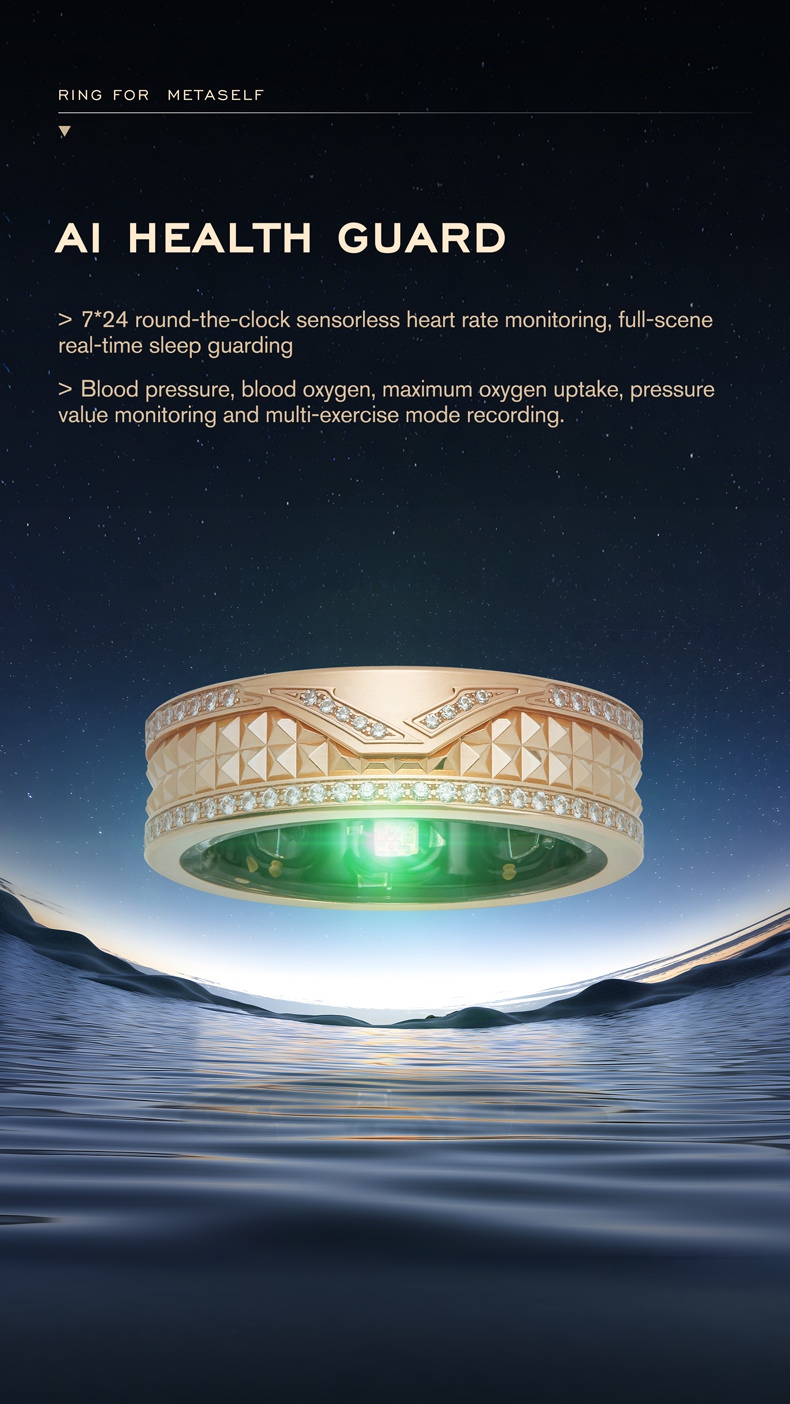
How Vertu's 2024 NEW VERTU AI DIAMOND RING – SHADOW PAIR EDITION Stands Out
Combining Luxury and Advanced Health Features
Imagine wearing a piece of jewelry that’s not just beautiful but also incredibly smart. That’s exactly what the 2024 NEW VERTU AI DIAMOND RING – SHADOW PAIR EDITION offers. This isn’t your average accessory. It combines the elegance of diamonds with cutting-edge health technology. You get features like 24/7 heart rate monitoring, sleep tracking, and even non-invasive blood glucose detection. It’s like having a personal health assistant wrapped around your finger.
The ring doesn’t just stop at health tracking. It’s waterproof, so you can wear it while swimming or showering. Plus, its long battery life means you won’t have to charge it constantly. With this smart ring, you’re not just investing in luxury—you’re investing in your well-being.
Addressing Market Gaps in the Smart Ring Segment
You might wonder how this ring stands out in a crowded market. Well, it fills gaps that other smart rings haven’t addressed. Many smart rings focus on either health tracking or style, but this one does both. It’s perfect for people who want advanced health features without compromising on aesthetics.
The Shadow Pair Edition also caters to a wide audience. Its pivoting design adds a unique touch, symbolizing good luck and elegance. Whether you’re a tech enthusiast or a fashion lover, this ring has something for you. It’s a game-changer in the smart ring segment, offering features that others simply don’t.
A Unique Blend of Fashion and Functionality
Let’s face it—most wearables prioritize function over form. But this ring changes the game. It’s crafted from premium materials like diamonds, 18K gold, and turquoise. The design is sleek and modern, making it a perfect accessory for any outfit. You’ll feel confident wearing it to a business meeting or a casual outing.
What makes it even better is its functionality. You’re not just wearing a piece of jewelry; you’re wearing a device that enhances your lifestyle. From tracking your health to complementing your style, this ring does it all. It’s the perfect blend of fashion and functionality, proving that you don’t have to choose between the two.
Apple’s decision to stay out of the smart ring market seems deliberate. The overlap with the Apple Watch makes a ring redundant, as the watch already offers robust health tracking and multifunctionality. A smart ring’s compact size limits its features, and consumer demand remains low compared to other wearables. For you, this means Apple likely sees little value in pairing a ring with its existing lineup. However, Vertu’s 2024 NEW VERTU AI DIAMOND RING – SHADOW PAIR EDITION fills this gap, blending luxury and advanced health features into a truly unique wearable.
FAQ
What makes smart rings different from smartwatches?
Smart rings are smaller and more discreet than smartwatches. They focus on essential features like health tracking and notifications. Unlike watches, rings offer a minimalist design that blends seamlessly with your style. They’re perfect if you prefer subtle wearables over larger devices.
Why hasn’t Apple launched a smart ring yet?
Apple likely sees smart rings as a niche market with limited revenue potential. The overlap with Apple Watch features and the technical challenges of creating a high-quality ring might not align with Apple’s priorities. They seem focused on enhancing their existing products instead.
How does Vertu’s smart ring stand out?
Vertu’s 2024 NEW VERTU AI DIAMOND RING – SHADOW PAIR EDITION combines luxury with advanced health features. It offers 24/7 heart rate monitoring, sleep tracking, and even non-invasive blood glucose detection. Its elegant design, crafted with diamonds and 18K gold, makes it both functional and fashionable.
Are smart rings worth the investment?
If you value compact wearables with health tracking features, smart rings are worth considering. They’re ideal for people who want functionality without wearing a bulky device. Vertu’s smart ring, for example, offers premium materials and advanced features, making it a great choice for tech-savvy individuals.
Can a smart ring replace a smartwatch?
Not entirely. Smart rings focus on essential features like health tracking and notifications, while smartwatches offer more functionality, including apps and larger displays. A smart ring can complement your smartwatch or serve as a lightweight alternative for specific needs.

